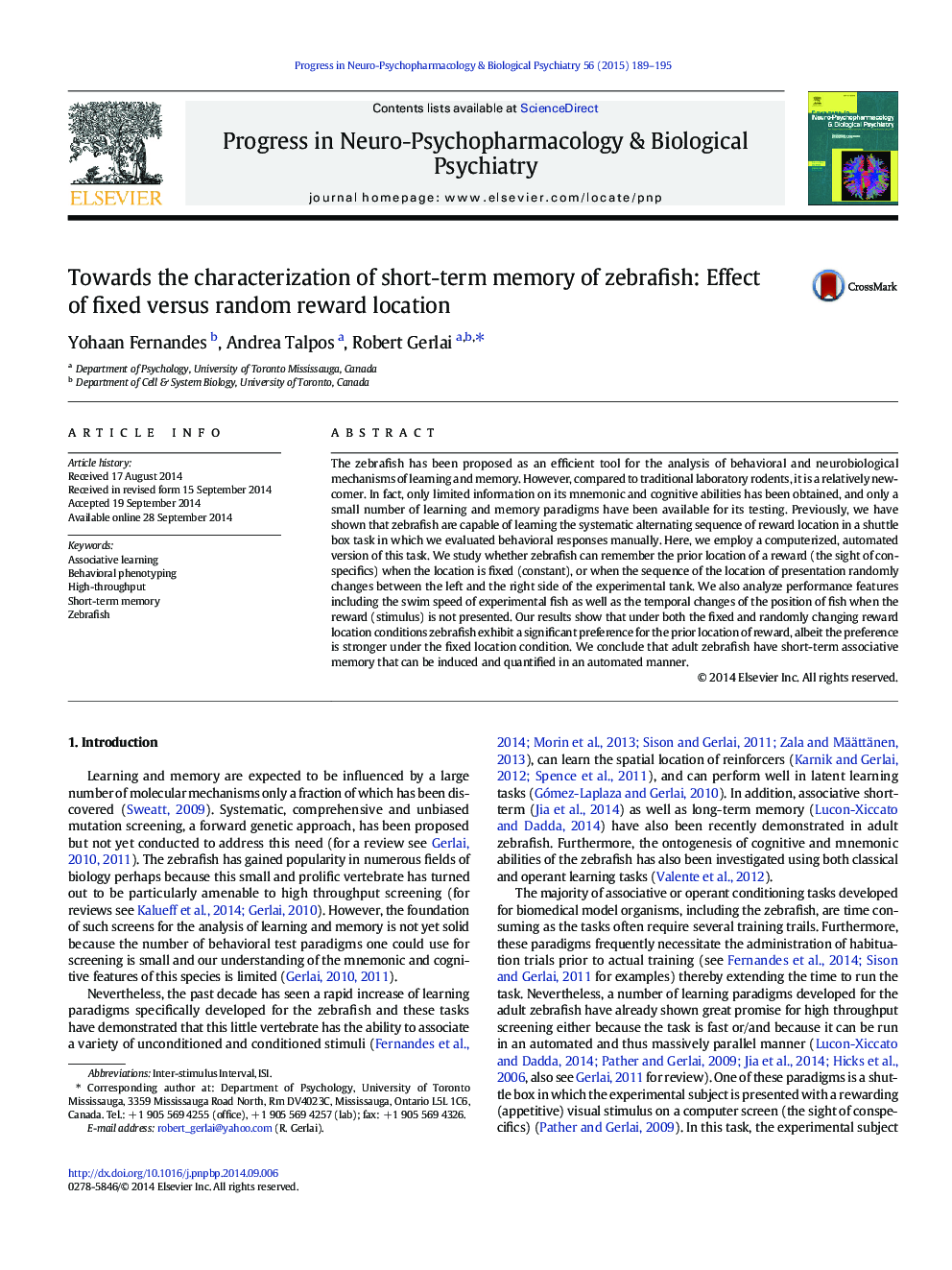| Article ID | Journal | Published Year | Pages | File Type |
|---|---|---|---|---|
| 2564812 | Progress in Neuro-Psychopharmacology and Biological Psychiatry | 2015 | 7 Pages |
•Zebrafish were required to remember prior location of conspecific images.•Zebrafish remembered both the constant and the randomly varying locations.•Evidence for short-term and long-term memory was obtained.•Shoal-image presentation paradigm allowed automated quantification of memory.
The zebrafish has been proposed as an efficient tool for the analysis of behavioral and neurobiological mechanisms of learning and memory. However, compared to traditional laboratory rodents, it is a relatively newcomer. In fact, only limited information on its mnemonic and cognitive abilities has been obtained, and only a small number of learning and memory paradigms have been available for its testing. Previously, we have shown that zebrafish are capable of learning the systematic alternating sequence of reward location in a shuttle box task in which we evaluated behavioral responses manually. Here, we employ a computerized, automated version of this task. We study whether zebrafish can remember the prior location of a reward (the sight of conspecifics) when the location is fixed (constant), or when the sequence of the location of presentation randomly changes between the left and the right side of the experimental tank. We also analyze performance features including the swim speed of experimental fish as well as the temporal changes of the position of fish when the reward (stimulus) is not presented. Our results show that under both the fixed and randomly changing reward location conditions zebrafish exhibit a significant preference for the prior location of reward, albeit the preference is stronger under the fixed location condition. We conclude that adult zebrafish have short-term associative memory that can be induced and quantified in an automated manner.
